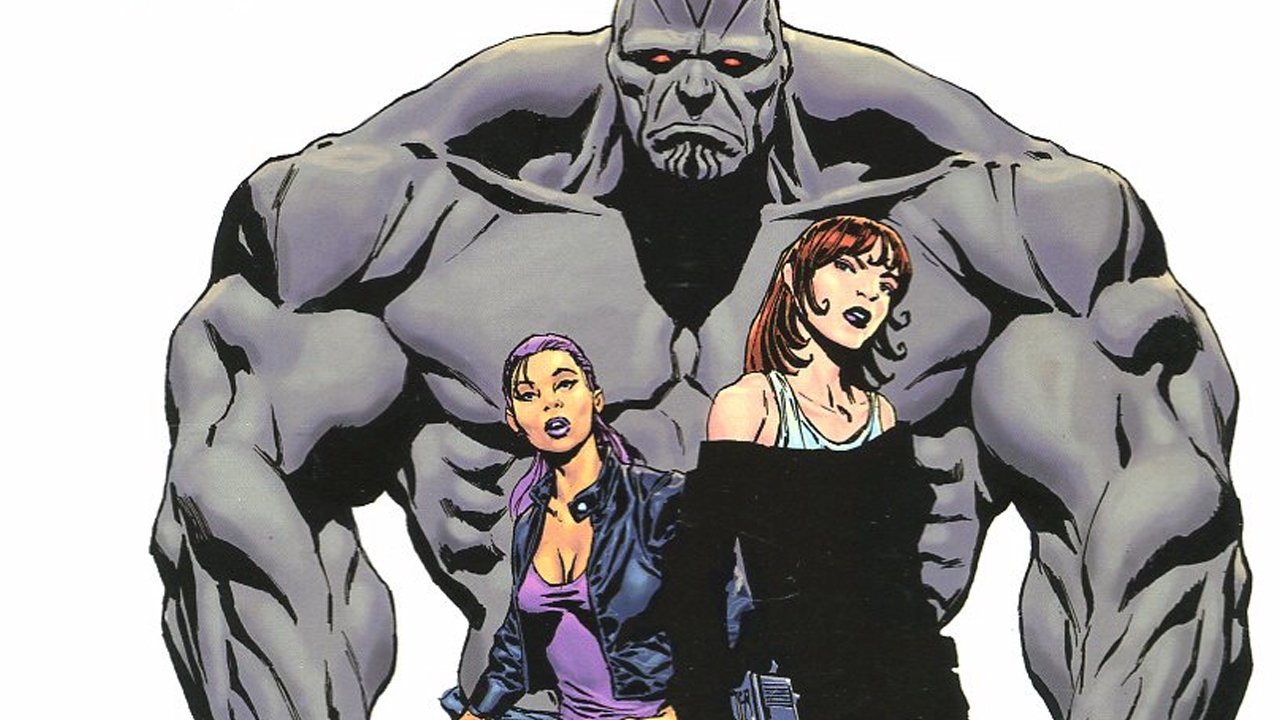If the name Monolith is somewhat familiar as a comic book property, that’s because DC Comics previously published this series in the early 2000s. Jimmy Palmiotti & Justin Gray wrote the series, with art provided by Phil Winslade. When I came to read this particular hardcover collection, I recalled vaguely seeing the titular character a few years ago, but didn’t realize then that the character was a recent creation from this creative team. The fact that the hardcover collection is being published by Image Comics threw me as well, as it was originally published by DC Comics, who relinquished their rights to the property back to the creators, who took it to Image to publish a collection of the original issues. This hardcover collects the first four issues of the series, which introduces readers to both the titular Monolith as well as to two characters named Alice, one from the 1930s, and another, her granddaughter, from the modern day.
As this series was originally an ongoing, the conclusion of this hardcover is merely setting up the rest of the series, as the four issues included form the origin story for these characters. The origin actually feels a little light, because there’s build-up towards setting up a status quo for these characters, but then no payoff as a result. The dual-storytelling technique is employed, as readers witness the 1930s creation of the Monolith, as well as the rediscovery of the Monolith during the 2000s. The story of the creature’s creation was the strongest aspect to this book, a great period drama forming the backdrop for a tragic tale of lost love, and desperation. The book is at its strongest when focusing on the 1930s Alice and her close friends/ roommates, as Palmiotti/Gray write a brilliant script, which really manages to grab the reader and make them instantly relate and care about this poor young woman, suffering through the Great Depression. The script stutters, however, when the focus shifts to the modern day, as the modern day Alice is nowhere near as interesting a character, mainly because she’s not as likeable. The dialogue feels like the writers are trying too hard to capture an urban vibe, and as a result it’s actually not as effective as it could have been otherwise. Alice isn’t the most root-worthy character, and this makes her trials and tribulations harder to really connect with, as she’s a drug user going through withdrawal, and engaged in some shady business. A sudden discovery that she’s inherited a house that she’s not allowed to sell is what moves the story forwards, toward her finding the Monolith, and freeing him from his imprisonment.
Winslade provides the artwork for this series, and does a particularly strong job at bringing the era of the Great Depression to life, visually. His modern-day artwork is enjoyable as well, but at times felt like it fell into the same trap that the scripting did, in that it tried too hard to be hip and cool, to look relevant and urban. That disconnect in both the scripting and the artwork at-times made it harder to really connect with the main character, and feel invested in her story. Winslade’s portrayal of the Monolith is fairly strong, as well as being somewhat Hulk-esque. It’s hard not to draw those comparisons, given the look of the character.
Thanks to Image Comics, fans that missed out on Palmiotti/Gray’s Monolith series get another crack at reading it. It’s an overall enjoyable story, although not necessarily one that works well within the confines of this one hardcover collection. Readers who like what they see in this first collection should be sure to pick up the second hardcover collection, which is due for release by the end of the year. The Depression-era part of the story is definitely the strongest, and most genuine-feeling.



